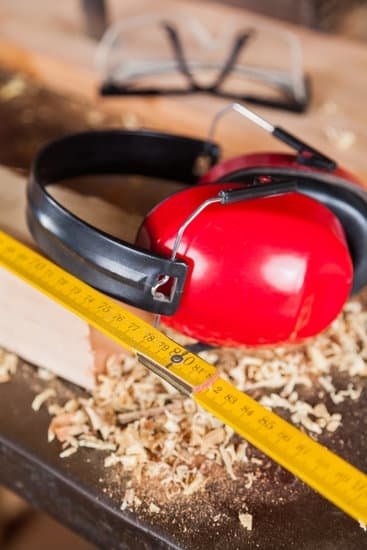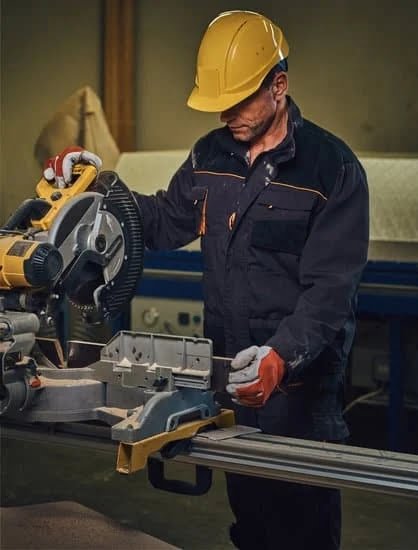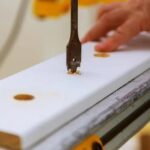Introduction How to Choose the Right Wood for Your Pencil Box
The material you choose for your pen box project is an important decision, as the type of wood can have a considerable effect on both aesthetics and functionality. When it comes to woodworking, the options include hardwood, softwood, and specialty woods. What makes each type of wood unique is its grain pattern, weight, density and strength. Depending on the intended use for your Pencil Box and the level of quality you’re expecting from the finished product, any one of these types may be best suited to ensure its durability and performance:
Hardwoods are usually strong and durable with detailed grain patterns that add to their overall aesthetic appeal. They are ideal for projects that require precise cutting or carving; plus they tend to hold up well during frequent usage. Examples include Maple, Oak, Walnut, Cherry and Teak.
Softwoods are more lightweight than hardwoods with a more uniform grain pattern. This can make them easier to work with but they are not necessarily as strong or durable so they aren’t ideal if your Pencil Box needs to withstand a lot of wear-and-tear over the long run. Common examples include Pine, Fir and Cedar.
Specialty woods possess unique characteristics that can add eye-catching texture or coloration to your Pencil Box project. These may include spalted woods (unusually stained by fungi) or fluorescent woods (that glow in black light). Specialty woods such as Purpleheart or Ironwood also provide plenty of strength compared to softer common species when properly dried out before building with them.
The main point here is that selecting the right wood for building your Pencil box depends largely on what it’s needed for – whether it’s just decoration or if must be used often in daily activities – as this will determine which type decreases likelihood of damage over time while providing enough strength necessary to perform at its best in all sorts of weather conditions – heat humidity icy winds sudden rain drops etc
Benefits of Making a Woodworking Pencil Box
Making a woodworking pencil box can be an incredibly rewarding experience. Not only does it give you the opportunity to create something beautiful out of raw materials, but it also teaches valuable lessons about craftsmanship and design. From selecting and preparing the wood, to carefully measuring, cutting, sanding and finishing each piece, the process is a learning experience that can help you develop your skills as a craftsman. Additionally, crafting a personal pencil box out of hardwood presents an aesthetic appeal that cannot be achieved through mass produced store-bought items. To top it off, completing a project such as this gives you a sense of accomplishment and pride that radiates far beyond what could ever be purchased in any store. Making a woodworking pencil box can help broaden your outlook on design and open up new possibilities for achieving satisfaction through creative work.
Essential Woodworking Tools Needed for the Project
When it comes to completing the task of making a woodworking pencil box, having the right tools is essential. Depending on the type of project you are undertaking, you should have at least a few basic tools in your arsenal. At minimum, you will need a saw for cutting pieces of wood, some sandpaper for smoothing the edges and surfaces of your workpiece, a hammer for joining pieces together and/or pounding nails to secure parts, clamps or vise grips for holding pieces together while working on them, wood glue, wood screws and dowels if needed to join pieces together, possibly a drill to make holes, a chisel for finer detail work in tougher pieces of wood, a ruler or measuring device such as calipers to ensure accuracy in all cuts and measurements taken throughout the process. Depending on how intricate and detailed your design is, you may also require additional supplies such as doweling jigs or tool bits to assist with making precise holes. Regardless of what type of project you are taking on, having these necessary tools around will make everything easier when it comes time to building your beautiful wooden box.
Safety Tips for Working with Wood
Always make sure that you are wearing the proper safety gear while working with wood, including eye protection and dust masks. When using power tools, wear earplugs to reduce the risk of hearing damage. Take special precautions such as ensuring that the work surface is level and clear of any debris before beginning a project like a woodworking pencil box. Secure the workpiece using clamps or jigs so that your hands are free to operate the tools safely. Always cut away from yourself and when you can, hold pieces in place with vices or grips. Do not carry tools with one hand while they are plugged in or running. Clean up your workspace by sweeping off sawdust and splinters when you’re finished. Regularly check for any worn blades or other parts of your power tools to ensure proper operation. Make sure your woodworking shop is well ventilated to reduce toxic fumes or airborne particles from inhalation hazards.
Basic Step-by-Step Guide to Making a Pencil Box
1. Gather the materials needed. A woodworking pencil box requires basic supplies such as wood, wood glue, clamps, saws, sandpaper, drill bits, screws and hardware.
2. Measure and cut the wood to size. Take a piece of wood and use a measuring tape and ruler to draw a line that is the same length and width as the desired pencil box size. Use a saw to cut along this marked-out line for the top and bottom pieces of the box. Then measure out two rectangles for each side of the box that are slightly longer than the width of these two pieces to allow extra space for sides with decorative edges or designs. Cut each rectangle into four parts accordingly.
3. Dry fit in order to see if all pieces fit together properly prior to starting assembly. This will help identify any potential mistakes with measurements or cuts before gluing or operating power tools on the project.
4. Assemble the pieces using either wood glue or screws depending on preference and aesthetic goals for final product’s appearance. Once assembled, any excess adhesive can be wiped away pre-clamping ahead of curing time overnight before sanding down any bumps created by the glue on each edge or surface of components once separated again after proper curing time has passed into its fully hardened state in 24 hours’ time frame since it was first applied one component at a time as each part was affixed one area at a time until fully formed as you desire it over an approximate 12 hour total period between its initial construction stages combined including full 24 hours until it is ready for use post-sanding procedure once complete before ever touching any type of finishing product whether clear sealant never paint should you choose planter varnish which has better weather resisting capabilities due not fade too quickly when exposed outdoor elements but need re coating process in 2 years max so best use something that last for longer life namely polyurethane coatings which highly durable protected moisture absorption increases detailed color outline stays intact no chipping over long range 10-15 IF KEPT APPLIED REGULAR INTERVALS!
Advanced Tips & Tricks for Creating a Quality Pencil Box
Creating a quality woodworking pencil box takes skill and patience. First, choose a variety of hardwood species for your project to give the box an interesting look. You can use contrasting colors or similar colors that still show off the woodgrain. Each type of wood will bring its own unique qualities so pick pieces that you think work best together. Once you have your materials, it’s time to get started on the construction of your pencil box.
When it comes to constructing the actual box, be sure to take your time and make sure all the joints are perfect. Your best bet is to cut each piece before doing any assembly, as then you can make sure all pieces fit together perfectly. This can be done either manually with tools like chisels and planes or with a table saw if available. The final assembly should involve pinning and doweling as this will produce a stronger joint than using glue alone
For finishing touches, consider adding backlighting strips around the lid of your pencil box to really make it stand out even more! Additionally, you could add various trinkets such as metal latches, hinges, or any other décor you want to include. This will help personalize your project even more and make it truly special in your eyes (and those of others). Finally, consider sealing the wood with a coating of polyurethane or beeswax for added protection and shine!
Finishing Touches for a Pencil Box
Once you have completed your woodworking pencil box, you may wish to add some additional finishing touches in order to make the piece truly stand out. Depending on the style and type of woodworking box, there are a variety of options that can be explored. For example, if you are looking for an elegant finish for your wooden pencil box, then you may choose to apply a stain or paint it with lacquer or other varnish colored products. Alternatively, if you prefer a more natural look then sanding and waxing could be an option; this helps to bring out the grain in the wood and has a classic appeal. You may even want to consider adorning your pencil box with carvings or decorative flourishes which will give it unique character. Finally, don’t forget the final step of adding protective felt or padding on the bottom in order to ensure that its contents remain safe over time.
Inspiration & Unique Ideas for Customizing Your Pencil Box
Creating and customizing a woodworking pencil box can be a fun and engaging project. With an array of different materials, techniques, and designs available to the crafter, it’s easy to make your pencil box unique to you.
For starters, you’ll need to choose a type of wood that fits the kind of design you’d like to craft. From Oak to Maplewood there is a range of choices when it comes to the type of wood used in making pencil boxes. Beyond this, you can incorporate various elements into your design such as paint or stain finishes as well as various embellishments including engravings, carvings, inlaying pieces of art or tiles into the lid of your pencil box. To take this even further, why not working with other materials such as clay for intricate designs or even paper mache for more vibrant colors. Lastly, hardware elements such as hinges and locks for securing your box can give it character and provide satisfaction knowing that its contents are secure.
Using these ideas for customizing your woodworking pencil box will turn an otherwise ordinary item into something special. Additionally, by having an understanding of what each component offers in terms of design personalization, this allows you get creative in building a one-of-a-kind piece that expresses your creativity without sacrificing functionality!
Conclusion Celebrating Your New Woodworking Pencil Box Creation
Now that you’ve made your very own woodworking pencil box, you can admire your work and show it off to family and friends. You should be proud of the effort, skill, and creativity you have put into this project! Displaying the finished product is a great way to remind yourself of the work you put in. Finding new ways to use your pencil box can also increase the joy of your completed project. Put pens and pencils in it for decoration in your office or workshop, store some jewelry or other small items inside, or give it away as a gift to someone special”the possibilities are endless when it comes to celebrating your woodworking creation.

Hi everyone! I’m a woodworker and blogger, and this is my woodworking blog. In my blog, I share tips and tricks for woodworkers of all skill levels, as well as project ideas that you can try yourself.





